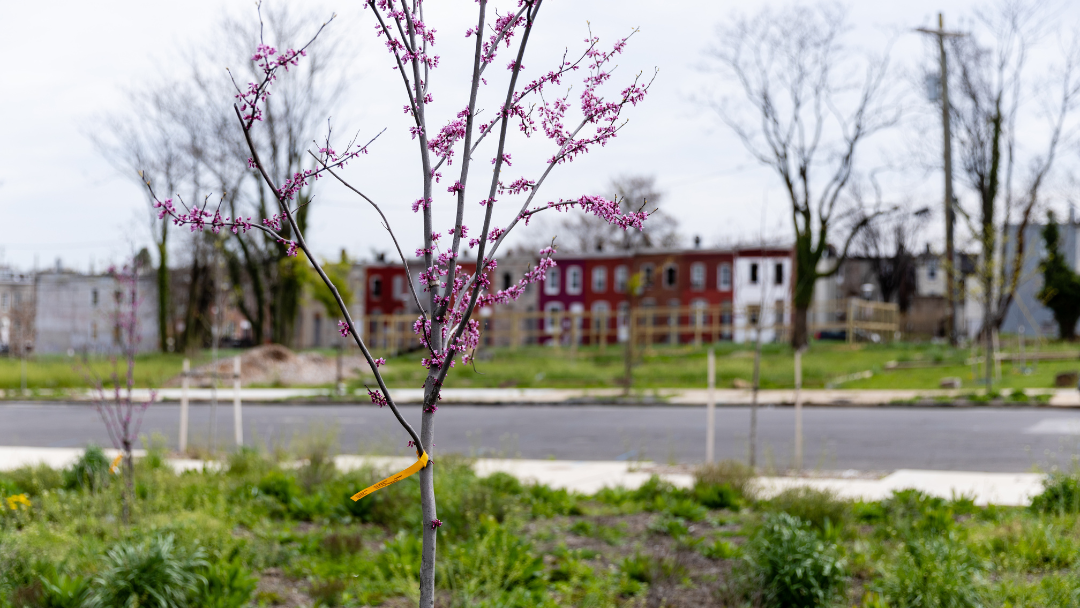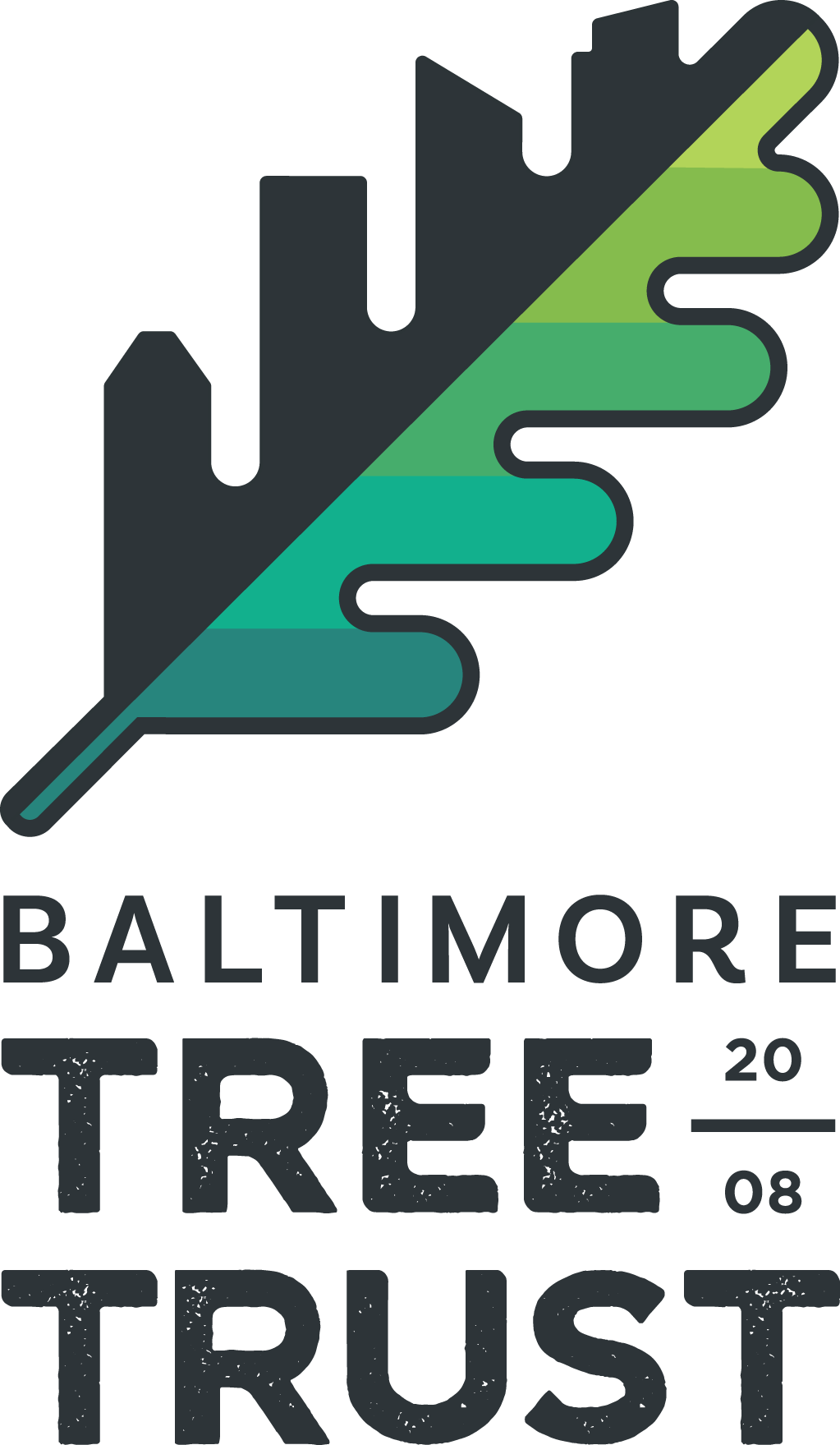Resources
Glossary
Defining Urban Forestry
The world of trees has its own language, and we don’t want terminology to be a barrier. Whether you’re attending a community meeting, reading a tree care guide, or talking with an arborist, understanding these terms helps you participate more fully in conversations about Baltimore’s urban forest.

Glossary, Alphabetized
This glossary defines the language we use at Baltimore Tree Trust and in urban forestry more broadly. From canopy coverage to root flare, these definitions will help you grasp why trees matter so much for Baltimore’s health, environment, and quality of life—and give you the confidence to advocate for trees in your own neighborhood.
Left Intentionally blank, Do not use this block, do not delete
Your content goes here. Edit or remove this text inline or in the module Content settings. You can also style every aspect of this content in the module Design settings and even apply custom CSS to this text in the module Advanced settings.
Biodiversity
This generally refers to a variety of things that are found within the natural environment and their interactions with each other. When thinking about our work with trees, this looks like planting a variety of tree species.
Canopy
Taller tree species that will typically grow up to 70 to 80 feet tall as street trees over 30-50 years.
Concrete Cutting
Removing hard, impervious surfaces like sidewalks to either create spaces for trees to be planted, or expand already existing tree wells.
Ecosystem Services
This refers to all of the benefits provided by trees such as air and water filtration, stormwater management, temperature control through shading, animal habitat creation, and carbon sequestration.
Geographic Information Systems (GIS)
Computer system used to compile, sort, analyze, and visualize data. BTT utilizes GIS technology to monitor tree locations, species, size, status, health conditions, as well as track other efforts such as neighborhood outreach, site preparation, and site assessment.
Impervious Surfaces
A term to describe if a surface does not allow for water to pass through it. Common examples include concrete and asphalt.
Maintenance Season
When our neighborhood forestry technicians (NFTs) are not planting in the summer and winter months, we focus on tree care and maintenance
Mid-Story
Medium-sized tree species between the heights of smallest and tallest trees in a forest, typically reaching a height of 30-50 feet.
Native Tree
A species that is naturally occurring within the geographic range and ecosystem.
Neighborhood Forestry Technician (NFT)
This is the name of the career pathways program here at BTT that creates opportunities for crew members to receive training related to tree planting and maintenance. It has 3 levels, with technician (NFT1), Specialist (NFT2), and Supervisor (NFT3).
Pervious Surfaces
A term to describe if a surface allows for water to pass through it to the soil below. Common examples include grass, soil, and mulch.
Planting Season
Trees are typically planted in the fall and spring due to the weather conditions.
Public Right of Way
BTT plants primarily in the public right of way, the strip of grass between the roadway and sidewalk.
“Right Tree, Right Place”
This is the practice of choosing the proper native, tree species for the space at hand, considering overhead and underground utilities, proximity to buildings, and other infrastructure.
Redlining
The historic practice by banks and other institutions of denying housing loans and other financial services to specific classes of people in order to enforce segregation in U.S. cities like Baltimore, emerging in the mid-20th century. The legacy of redlining can be seen in the present-day distribution of trees in Baltimore and informs parts of our planting operations.
Street Trees
Trees planted along streets, which BTT primarily plants in the right of way in neighborhoods.
Stump Grinding
The practice of removing a stump to create a site for a new tree to be planted.
Tree Canopy Cover
This refers to the area covered by the tree canopy. Baltimore City has a 40% canopy goal by 2037.
Tree Care Warranty
BTT commits to providing tree care (i.e. Watering, mulching, staking, structural pruning, replacement) for all street trees we plant for 2 years from the planting date.
Tree Education Program
A series of lessons and activities free of charge for Baltimore City School educators to utilize in their classrooms. Designed for students K-8 focused on topics, such as green space planning, tree biology, and proper tree care practices.
Tree Lawn
A continuous strip of grass between the sidewalk and road where trees can be planted
Tree Well/Pit: A cut-out in the concrete where trees can be planted measuring at least 4’ x 8’
TreeBaltimore: a tree planting effort led by Baltimore City’s Forestry Division, TreeBaltimore is a coalition of nonprofits, city agencies, community groups, and individual residents all working together to green Baltimore City.
Understory: Smaller tree species that often grow under the canopy trees, usually shade tolerant because they can grow under larger trees that block the sun. These trees typically reach a height of 15 to 20 feet tall.
Urban Greening: The practice of incorporating vegetation into cities and urban environments, namely trees
Urban Forestry Inequity: The unequal distribution of trees between neighborhoods in cities, often a consequence of historic, discriminatory practices. In cities like Baltimore, this contributes to inequitable access to green space, shade, and clean air on a hyperlocal level. Our work prioritizes neighborhoods affected by urban forestry inequity, because we believe that everyone who wants trees in their neighborhood deserves access to the benefits they provide
Urban Heat Island (UHI) Effect: The phenomenon of cities having a much higher average temperature than surrounding rural areas due to the high concentration of man-made, impervious surfaces that absorb and retain the sun’s heat. Trees and other greening practices help contribute to the cooling of cities.
Tree Well/Pit
A cut-out in the concrete where trees can be planted measuring at least 4’ x 8’.
TreeBaltimore
A tree planting effort led by Baltimore City’s Forestry Division, TreeBaltimore is a coalition of nonprofits, city agencies, community groups, and individual residents all working together to green Baltimore City.
Understory
Smaller tree species that often grow under the canopy trees, usually shade tolerant because they can grow under larger trees that block the sun. These trees typically reach a height of 15 to 20 feet tall.
Urban Greening
The practice of incorporating vegetation into cities and urban environments, namely trees.
Urban Forestry Inequity
The unequal distribution of trees between neighborhoods in cities, often a consequence of historic, discriminatory practices. In cities like Baltimore, this contributes to inequitable access to green space, shade, and clean air on a hyperlocal level. Our work prioritizes neighborhoods affected by urban forestry inequity, because we believe that everyone who wants trees in their neighborhood deserves access to the benefits they provide.
Urban Heat Island (UHI) Effect
The phenomenon of cities having a much higher average temperature than surrounding rural areas due to the high concentration of man-made, impervious surfaces that absorb and retain the sun’s heat. Trees and other greening practices help contribute to the cooling of cities.
Your Title Goes Here
Your content goes here. Edit or remove this text inline or in the module Content settings. You can also style every aspect of this content in the module Design settings and even apply custom CSS to this text in the module Advanced settings.
